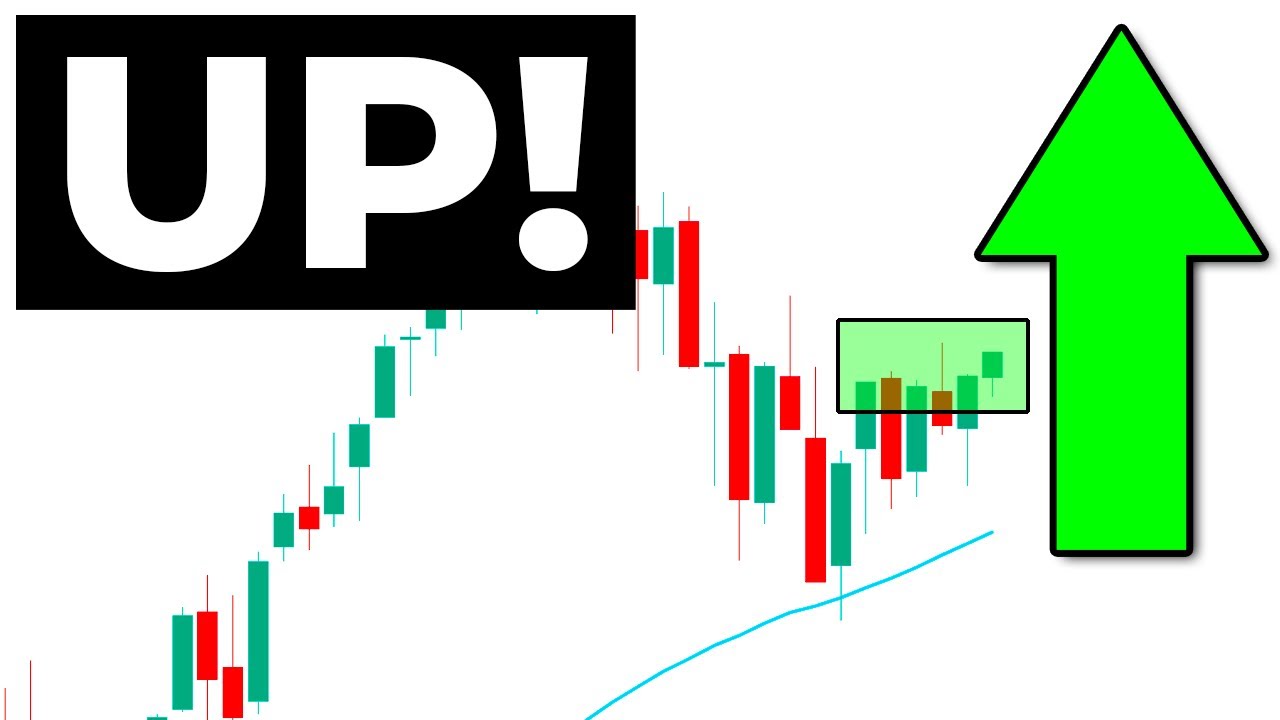Total Return - Navigating Bear And Bull Markets For Maximum Investment Success
Total return is a crucial metric used to measure the performance of an investment or a pool of investments over a specific evaluation period. It provides a comprehensive assessment by considering various factors such as interest, capital gains, dividends, and distributions realized during the period. By incorporating both income and capital appreciation, total return offers a more holistic view of an investment's overall performance.
Author:Darren McphersonReviewer:Dexter CookeJun 16, 20233.2K Shares87.4K Views

Total returnis a crucial metric used to measure the performance of an investment or a pool of investments over a specific evaluation period. It provides a comprehensive assessment by considering various factors such as interest, capital gains, dividends, and distributions realized during the period. By incorporating both income and capital appreciation, total return offers a more holistic view of an investment's overall performance.
Understanding Total Return
When evaluating the performance of a security, total return represents the value an investor earns over a designated period, typically one year, considering reinvested distributions. It is expressed as a percentage of the initial investment amount.
For instance, a total return of 20% implies that the security's value increased by 20% due to factors like price appreciation, dividend payouts (in the case of stocks), coupon payments (in the case of bonds), or capital gains (in the case of funds). Therefore, total return serves as a robust measure to assess an investment's overall performance.

Income vs. Total Return: What to Consider
Significance Of Total Return
Total return accounts for both capital gains and income, making it a valuable measure for evaluating investment performance.
Some stocks may offer substantial dividends but limited growth potential, which might not be accurately reflected by solely considering capital gains.
By including other methods of increasing a stock's value, such as price appreciation, total return provides a more comprehensive perspective. For example, if an investor purchases shares of Company B and witnesses a 24.5% increase in share price within a year, they have gained solely from the price change.
However, if Company B also distributed dividends during the year, incorporating the stock's yield of 4.1% alongside the price change would result in a combined return of 28.6%. Hence, total return enables investors to assess an investment's true growth over time and consider various factors contributing to its performance.
Furthermore, total return plays a crucial role in evaluating a company's historical performance. By calculating the expected future return, investors can set reasonable expectations for their investments and plan for future needs, such as retirement or other financial goals.
Average Annual Total Returns
When analyzing the performance of mutual funds, investors should examine the average annual total returns over different periods. Comparing these returns to a benchmark provides insights into how the fund has performed relative to a specific index. It is important to remember the following when considering average annual total returns:
- The reported numbers usually incorporate the reinvestment of dividends and capital gains distributions.
- The effects of sales charges may or may not be included in the returns. However, this information is disclosed alongside the return figures, ensuring transparency and accurate analysis.
Example Of Total Return
To illustrate the concept of total return, let's consider an example. An investor purchases 100 shares of Stock A at $20 per share, resulting in an initial investment of $2,000. Stock A pays a 5% dividend, which the investor reinvests by purchasing an additional five shares. After one year, the share price rises to $22.
To calculate the investment's total return, the investor divides the total investment gains by the initial investment and multiplies it by 100 to convert it into a percentage. In this case, the total investment gains amount to $310 (105 shares x $22 per share = $2,310 current value - $2,000 initial value = $310 total gains), and the initial investment is $2,000.
Thus, the total return is calculated as follows:
($310 / $2,000) x 100 = 15.5%
Therefore, the investor achieved a total return of 15.5% on their investment in Stock A.
Bull Market
A bull marketsignifies a flourishing financial landscape where prices soar or are poised to ascend. Although commonly associated with the stock market, the term extends its reach to encompass various tradable assets like bonds, real estate, currencies, and commodities.
In a bull market, the relentless ebb and flow of securities give way to an extended period of upward momentum, lasting months or even years. Let's delve into the intricacies of bull markets, their characteristics, driving factors, and strategies to harness their potential.
Understanding Bull Markets
Bull markets thrive on optimism, investor confidence, and the anticipation of prolonged prosperity. However, consistently predicting the timing of market shifts remains a daunting task due to the intricate interplay of psychological factors and speculation.
While no universal metric precisely defines a bull market, a common benchmark is a substantial 20% surge in stock prices from recent lows. These remarkable market trends are often identified retrospectively, making it challenging to foresee their emergence. An exemplar of a significant bull market was observed between 2003 and 2007, with the S&P 500 experiencing a substantial upswing followed by a decline during the 2008 financial crisis.

What is a bull market?
The Makings Of A Bull Market
Bull markets typically emerge in tandem with a robust and expanding economy. They coincide with a flourishing Gross Domestic Product (GDP), declining unemployment rates, and augmented corporate profits. Investor confidence skyrockets during these periods, creating a favorable atmosphere for stock market demand. Furthermore, bull markets often witness a surge in Initial Public Offerings (IPOs), fostering opportunities for investors to engage with promising new ventures.
While quantifiable factors like corporate profits and unemployment provide insights, grasping the overall market sentiment can prove challenging. Supply and demand for securities teeter on opposing ends, with a weak supply and a strong appetite for buying. Investors actively participate, aiming to reap profits from the market's upward trajectory.
Characteristics Of Bull Markets
Several distinctive characteristics define the landscape of a bull market:
- Increased Trading Volume -As investor enthusiasm soars, trading volume surges, driven by the desire to capitalize on potential capital gains. More investors choose to buy and hold securities, fostering liquidity in the market.
- Premium Valuations - Securities within a bull market tend to garner higher valuations as investors willingly pay elevated prices in anticipation of future appreciation.
- Enhanced Market Liquidity -Bull markets often create an environment conducive to swift buying and selling of securities at reasonable prices. Demand surpasses supply, making it easier for investors to engage in trading activities.
- Rewarding Shareholders - Companies thriving in a bull market may choose to reward shareholders by increasing dividends, attracting income-focused investors.
- Increased IPO Activity -Bull markets witness a surge in companies going public through IPOs, providing investors with opportunities to partake in the growth of promising enterprises.
Strategies To Navigate The Bull Market
Investors seeking to capitalize on a bull market can employ various strategies, leveraging the upward momentum to their advantage:
- Buy and Hold -A classic strategy involving the acquisition of securities with the intention to hold onto them for a future sale at a higher price. The optimism and positive market sentiment during a bull market fuel this approach.
- Increased Buy and Hold -An amplified version of the buy and hold strategy, wherein investors continue to accumulate securities that experience continuous price appreciation. This method involves purchasing additional fixed quantities of shares for every predefined increase in the stock price.
- Retracement Additions - Even within a bull market, temporary price reversals, known as retracements, occur. Savvy investors capitalize on these dips by buying at discounted prices, expecting swift recoveries and subsequent price surges.
- Full Swing Trading -This highly active strategy entails leveraging short-selling and other techniques to maximize gains during fluctuations within a bull market. Investors employing this approach closely monitor market shifts and employ swift actions to optimize returns.
Did you know?
Returns are generally positive during a bull market.
Historic Bull Markets
Throughout history, remarkable bull markets have emerged, each with its distinctive features and drivers. Noteworthy examples include:
- The Roaring Twenties - A speculative bull market of the 1920s, characterized by rapid economic growth, soaring asset prices, and increased consumer spending. The era came to a halt with the infamous stock market crash of 1929.
- The Japanese Bull Market of the 1980s -Japan experienced a bull market fueled by rapid economic growth and soaring asset prices. However, the bubble eventually burst, leading to a prolonged period of economic downturn in the 1990s.
- The Reagan Bull Market of the 1980s -In the 1980s, the stock market experienced a bull market driven by the economic policies of the Reagan administration and the remarkable performance of the technology sector. The era saw substantial gains, although it ended with the Black Monday stock market crash in October 1987.
- The 1990s Bull Market - Known as the dot-com bubble, this bull market witnessed the explosive growth of the internet and technology sectors. The market rallied until the early 2000s, eventually succumbing to a significant downturn.
- The 2009 Bull Market - The longest bull market in recorded history, spanning from March 2009 to February 2020. Driven by robust earnings growth, low-interest rates, and unwavering investor optimism, the market experienced extraordinary gains.
These examples highlight the diverse nature of bull markets and underscore the significant role they play in shaping economic landscapes.

New BULL MARKET: What History Tells Us...
Bear Market
A bear marketmaterializes when market conditions witness prolonged declines in prices. Typically, this term describes a scenario where securities prices plummet by 20% or more from recent highs, accompanied by pervasive pessimism and negative investor sentiment.
Bear markets are often associated with overall market or index downturns, such as the S&P 500. However, individual securities or commodities can also be considered in a bear market if they experience a sustained decline of 20% or more, usually spanning two months or longer. Bear markets may coincide with broader economic downturns, such as recessions. They stand in stark contrast to the upward trends of bull markets.
Understanding Bear Markets
Bear markets arise when growth prospects dwindle, shattering expectations and leading to a decline in stock prices. Prolonged periods of low asset prices often result from herd behavior, fear, and a rush to safeguard against further losses.
Defining a bear market can be subjective. One definition considers a market to enter bear territory when stocks, on average, fall by at least 20% from their peak. However, this threshold is arbitrary, akin to the 10% decline used for corrections. Another viewpoint characterizes bear markets as periods when investors prioritize risk aversion over risk-seeking, potentially spanning months or even years as they seek safer investments.
Diverse factors contribute to the emergence of bear markets, including a weak or slowing economy, bursting market bubbles, pandemics, wars, geopolitical crises, and significant shifts in the economic landscape. Indicators of a weakening economy include low employment rates, reduced disposable income, weakened productivity, and declining business profits.
Government interventions, such as changes in tax rates or the federal funds rate, as well as drops in investor confidence, can trigger bear markets. Anticipating unfavorable events, investors take action by selling shares to mitigate losses.
Bear markets can endure for varying durations. Secular bear markets, marked by sustained below-average returns, can persist for 10 to 20 years. Although temporary rallies may offer respite, prices eventually regress to lower levels. Cyclical bear markets, on the other hand, span a few weeks to several months.
Overall, bear markets test investors' resilience as they navigate challenging economic conditions, seeking opportunities while managing the risks inherent in declining markets.
Video unavailable
This video is unavailable: Original link to video
Phases Of A Bear Market
Bear markets typically progress through distinct phases:
- High Prices and Investor Sentiment -The initial phase is characterized by high prices and bullish sentiment among investors. As the phase nears its end, investors begin exiting the market and capitalizing on profits.
- Sharp Stock Price Declines -In the second phase, stock prices experience sharp declines, accompanied by decreased trading activity and corporate profit reductions. Economic indicators, once positive, start to exhibit below-average performance. Investor panic often takes hold during this phase, known as capitulation.
- Speculative Activity -The third phase witnesses speculators entering the market, leading to sporadic price increases and heightened trading volume.
- Gradual Price Declines and Reversal - The final phase is marked by continued, albeit gradual, price declines. As prices reach low levels and positive news emerges, investor confidence gradually returns, often signaling the transition from bear markets to bull markets.
Bear Markets Vs. Corrections
It is essential to distinguish bear markets from corrections, which represent short-term trends lasting less than two months. Corrections present favorable opportunities for value investors to enter the market, while bear markets rarely offer suitable entry points. Determining the bottom of a bear market is an arduous task, making it challenging to recover losses unless investors engage in short selling or employ other strategies tailored for falling markets.
Between 1900 and 2018, the Dow Jones Industrial Average (DJIA) experienced around 33 bear markets, averaging one every three years. The most notable bear market in recent history coincided with the global financial crisis between October 2007 and March 2009, during which the DJIA declined by 54%. The global COVID-19 pandemic precipitated the most recent bear market in 2020 for the S&P 500 and DJIA, with the Nasdaq Composite also experiencing a bear market in March 2022 due to concerns regarding war in Ukraine, economic sanctions, and high inflation.
Strategies In Bear Markets
Investors can potentially capitalize on bear markets through several strategies, including:
Short Selling
Investors can generate gains by engaging in short selling, which involves selling borrowed shares and repurchasing them at lower prices. Short selling carries substantial risks and can result in significant losses if the trade does not go as planned.
Put Options and Inverse ETFs
Put options grant the option holder the right, but not the obligation, to sell a stock at a predetermined price on or before a specific date. Put options can be utilized to speculate on falling stock prices or hedge against price declines to safeguard long-only portfolios. Inverse ETFs are designed to move in the opposite direction of the tracked index, providing a way to profit from market declines.
Did you know?
Returns are generally negative during a bear market.
Historic Bear Markets
Historically, several bear markets have left their mark on financial history. Notable examples include:

PAST BEAR MARKETS & How To Profit From Them
- The Housing Mortgage Crisis (2007-2009) -The bursting of the housing mortgage bubble led to a significant bear market from October 2007 to March 2009. The S&P 500 plummeted from its peak of 1,565.15 to 682.55 as the consequences of mortgage defaults on the overall economy became evident.
- The COVID-19 Pandemic (2020) -The COVID-19 pandemic triggered a swift bear market in March 2020. The Dow Jones Industrial Average and the S&P 500 entered bear market territory, experiencing substantial declines from all-time highs to lows within weeks.
- The Bursting of the Dot-Com Bubble (2000-2002) - Following the dot-com bubble, the S&P 500 witnessed a bear market that erased around 49% of its value, lasting from March 2000 to October 2002.
- The Great Depression (1929-1932) -The stock market collapse of October 1929 marked the onset of the Great Depression, leading to a prolonged bear market that endured until 1932.
These examples highlight the impact of bear markets on financial markets and the broader economy.
Bull Vs Bear Market
A bear market stands in direct contrast to a bull market, characterized by declining prices and typically enveloped in pessimism. The prevailing explanation for the origins of these terms revolves around the way animals attack their opponents. Bulls thrust their horns upward, symbolizing an upward market trend. Conversely, bears swipe their paws downward, representing a downward market trend.
The bear market phenomenon derives its name from the attacking style of a bear, swiping its paws downward. Similarly, the bull market's name may be attributed to the upward thrust of a bull's horns. Understanding the distinction between bull and bear markets provides valuable insights into the dynamics of market trends.
| BULL MARKET | BEAR MARKET |
| Rising prices | Falling prices |
| Optimistic sentiment | Pessimistic sentiment |
| Economic expansion | Economic contraction |
| Market trend - Upward | Market trend - Downward |
Bull and bear markets often align with the economic cycle, encompassing phases of expansion, peak, contraction, and trough. The emergence of a bull market often serves as a leading indicator of economic expansion. As stock prices are driven by public sentiment about future economic conditions, the market tends to rise even before broader economic measures, such as GDP growth, experience an upswing.
Conversely, bear markets usually manifest prior to economic contraction taking hold. In typical U.S. recessions, the stock market decline often precedes GDP decline by several months.

Bull and Bear Markets (Bullish vs. Bearish) Explained in One Minute: From Definition to Examples
By analyzing the relationship between bull and bear markets and the broader economic landscape, investors can gain valuable insights to navigate market fluctuations effectively. Understanding the timing and characteristics of these market cycles aids in making informed investment decisions.
People Also Ask
What Is A Total Return Strategy?
A total return strategy is an investment approach that aims to achieve steady and attractive returns in all market conditions. It does this by using a diversified approach across various sectors while still being mindful of market benchmarks and maintaining a risk profile similar to conservative fixed-income investments.
What Is Total Return Or Price Return?
Price return only considers changes in the price of an investment, while total return includes additional income like dividends and interest. Total return provides a more comprehensive measure of investment performance.
What Is Total Return Or Dividend?
Total return encompasses all aspects of an investment's performance, including capital appreciation, dividends, and interest. It provides a comprehensive measure of the overall return generated by an investment.
Conclusion
In conclusion, understanding bull and bear markets is crucial for investors. Bull markets signify rising prices and optimism, while bear markets indicate downturns with falling prices. Total return, which considers both price appreciation and income, is a key factor in evaluating investment performance. By staying informed and maintaining a diversified approach, investors can navigate market cycles and strive for favorable total returns.

Darren Mcpherson
Author
Darren Mcpherson brings over 9 years of experience in politics, business, investing, and banking to his writing. He holds degrees in Economics from Harvard University and Political Science from Stanford University, with certifications in Financial Management.
Renowned for his insightful analyses and strategic awareness, Darren has contributed to reputable publications and served in advisory roles for influential entities.
Outside the boardroom, Darren enjoys playing chess, collecting rare books, attending technology conferences, and mentoring young professionals.
His dedication to excellence and understanding of global finance and governance make him a trusted and authoritative voice in his field.

Dexter Cooke
Reviewer
Dexter Cooke is an economist, marketing strategist, and orthopedic surgeon with over 20 years of experience crafting compelling narratives that resonate worldwide.
He holds a Journalism degree from Columbia University, an Economics background from Yale University, and a medical degree with a postdoctoral fellowship in orthopedic medicine from the Medical University of South Carolina.
Dexter’s insights into media, economics, and marketing shine through his prolific contributions to respected publications and advisory roles for influential organizations.
As an orthopedic surgeon specializing in minimally invasive knee replacement surgery and laparoscopic procedures, Dexter prioritizes patient care above all.
Outside his professional pursuits, Dexter enjoys collecting vintage watches, studying ancient civilizations, learning about astronomy, and participating in charity runs.
Latest Articles
Popular Articles